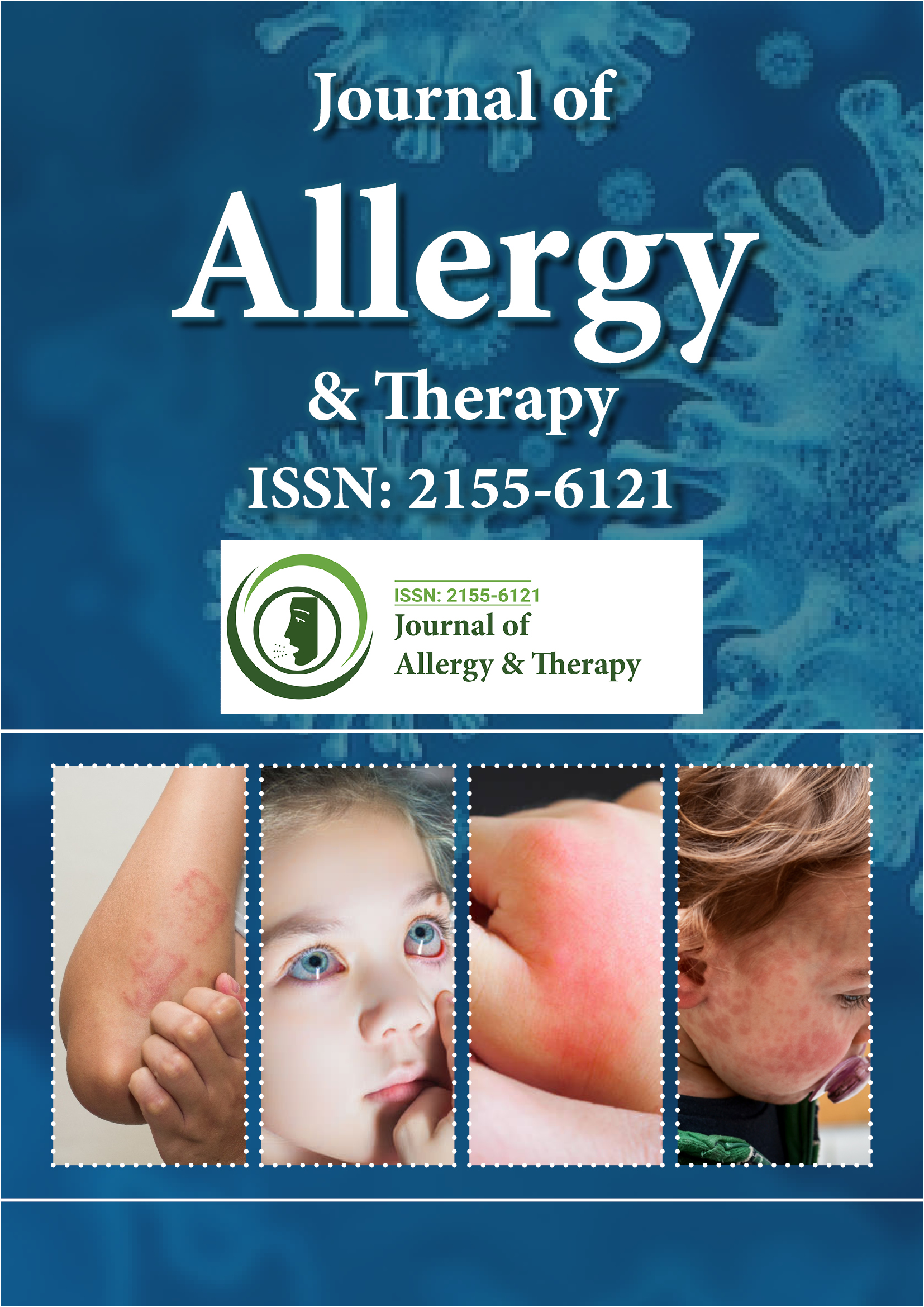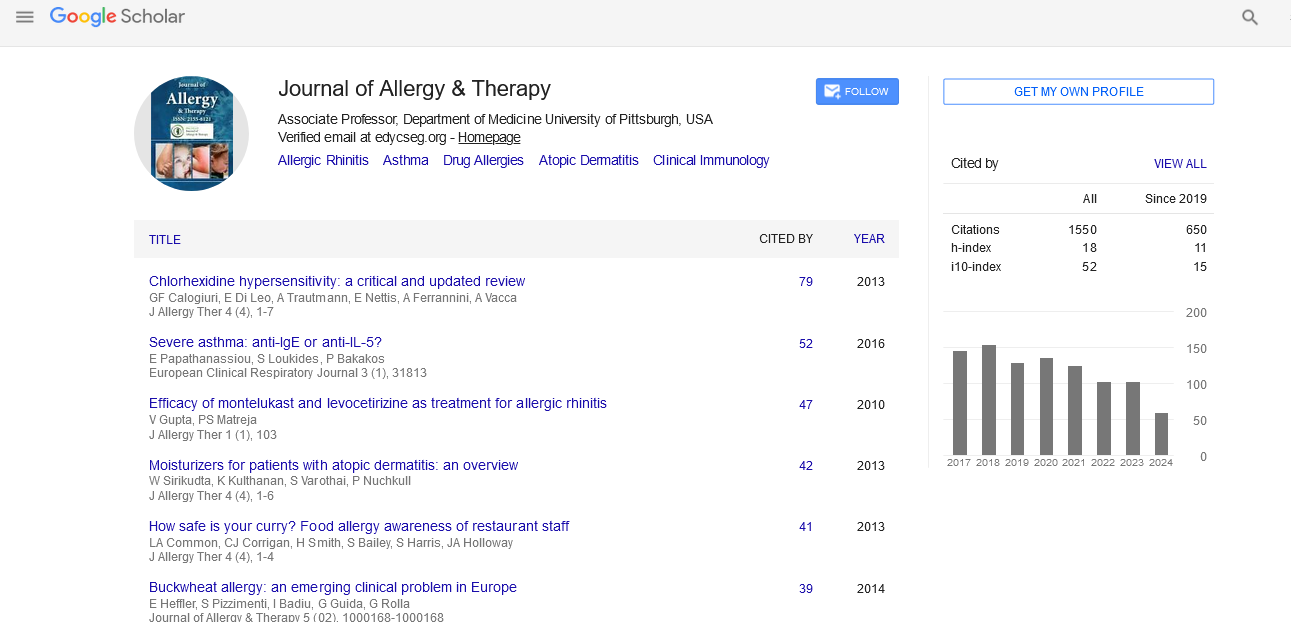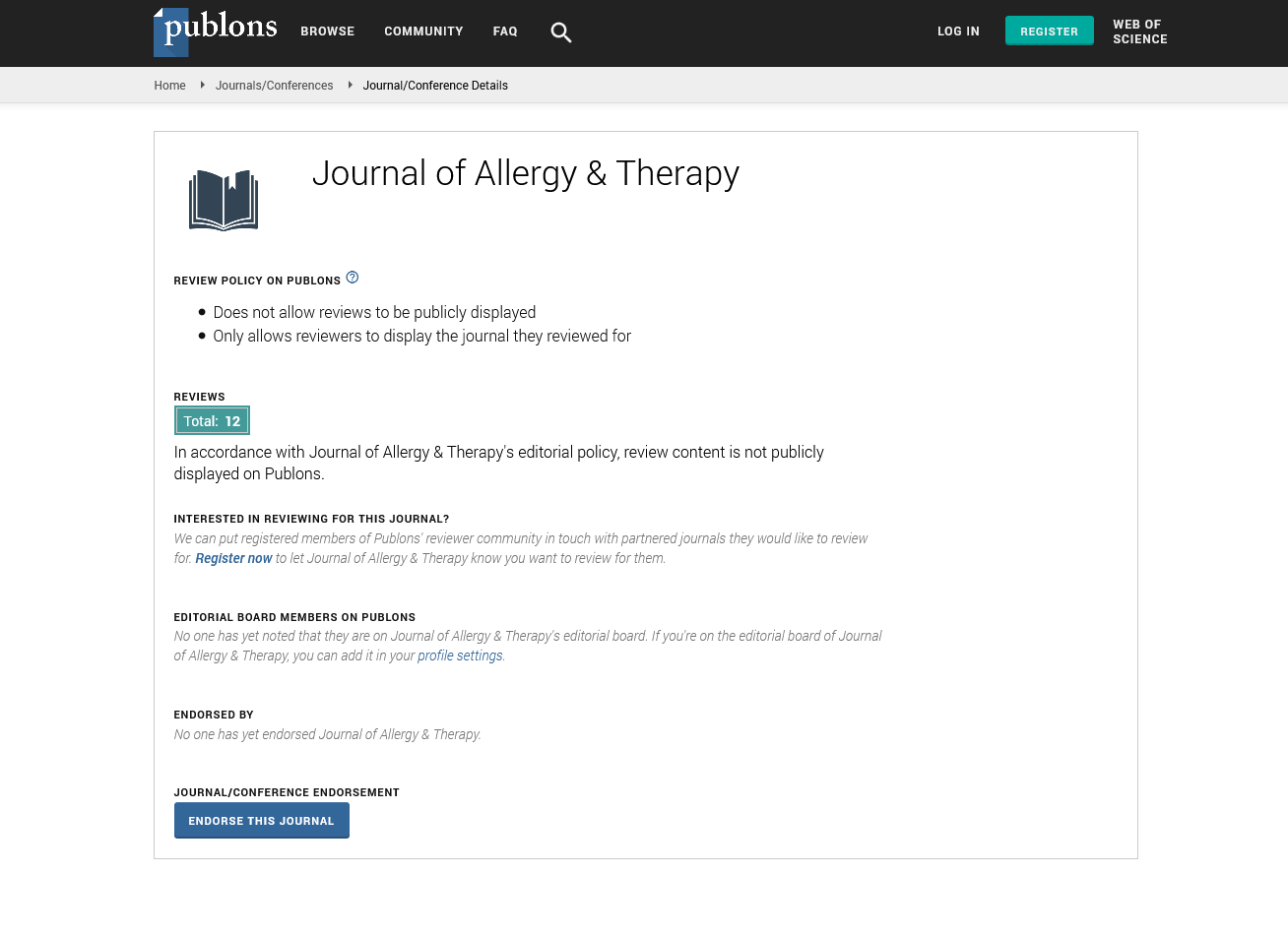Indexed In
- Academic Journals Database
- Open J Gate
- Genamics JournalSeek
- Academic Keys
- JournalTOCs
- China National Knowledge Infrastructure (CNKI)
- Ulrich's Periodicals Directory
- Electronic Journals Library
- RefSeek
- Hamdard University
- EBSCO A-Z
- OCLC- WorldCat
- SWB online catalog
- Virtual Library of Biology (vifabio)
- Publons
- Geneva Foundation for Medical Education and Research
- Euro Pub
- Google Scholar
Useful Links
Share This Page
Journal Flyer

Open Access Journals
- Agri and Aquaculture
- Biochemistry
- Bioinformatics & Systems Biology
- Business & Management
- Chemistry
- Clinical Sciences
- Engineering
- Food & Nutrition
- General Science
- Genetics & Molecular Biology
- Immunology & Microbiology
- Medical Sciences
- Neuroscience & Psychology
- Nursing & Health Care
- Pharmaceutical Sciences
Opinion Article - (2022) Volume 13, Issue 7
Factors Contributing to the Emergence of the Oral Allergy Syndrome
Ritter Baig*Received: 04-Jul-2022, Manuscript No. JAT-22-17741; Editor assigned: 07-Jul-2022, Pre QC No. JAT-22-17741 (PQ); Reviewed: 22-Jul-2022, QC No. JAT-22-17741; Revised: 01-Aug-2022, Manuscript No. JAT-22-17741 (R); Published: 08-Aug-2022, DOI: 10.35248/2155-6121.22.13.298
Description
An allergic reaction that is limited to the lips, mouth, and throat is called Oral Allergy Syndrome (OAS), which is a kind of food allergy. People with asthma or hay fever from tree pollen who consume fresh (raw) fruits or vegetables are more likely to develop OAS. OAS may also be brought on by other pollen allergies. It seems that adults are more affected than kids. Crossreactivity between plant proteins from pollen and fruits or vegetables causes oral allergy syndrome. The immune system detects a similarity when a child or adult with a pollen allergy consumes a raw fruit or vegetable and develops an allergic reaction.
Various reactions based on various allergies
Some claim that only specific fruit varieties-for instance, certain apple varieties-cause symptoms. In the case of OAS, people's reactions to various meals depend on the kind of seasonal allergies they suffer from. For instance, pitted fruit or carrots may cause problems if you are sensitive to birch tree pollen, the main airborne allergen that causes symptoms in the spring. Those who have birch pollen allergies may experience tongue irritation even after eating peanuts, almonds, or hazelnuts. You should consult an allergist or immunologist if mouth itching is observed in association with nuts because minor mouth symptoms could be a sign of a more severe allergic reaction to nuts.
Peaches, celery, tomatoes, melons (cantaloupe, watermelon, and honeydew), and oranges may cause an allergic reaction in people with grass allergies. People who react to ragweed may experience symptoms after consuming foods including bananas, cucumbers, melon, and zucchini. The potential cross-reactivities between pollen and plant foods are listed in this useful table.
Diagnosis
Usually, the patient has a history of atopy as well as a family history of the condition. Eczema, otolaryngitis from hay fever, or asthma will frequently take precedence, concealing the food allergy. Since symptoms are only provoked by raw or completely ripened fresh foods, well-cooked, canned, pasteurised, or frozen food offenders frequently cause little to no reaction due to denaturation of the cross-reacting proteins, delaying and confusing diagnosis. It's crucial to make the right allergy type diagnostic. OAS patients could have allergies to substances other than pollen. Patients frequently misdiagnose oral reactions to food as being brought on by pesticides or other pollutants. It's important to distinguish between systemic symptoms of OAS and other reactions to food, such as lactose intolerance and intolerances caused by a patient's inability to metabolise naturally occurring substances (such as proteins and salicylates) in food.
The most common way of treatment is to simply avoid the foods that trigger symptoms when they are consumed raw. The foods may need to be avoided in their dried or dehydrated forms because they are typically not cooked and still have the potential to induce symptoms. Peeling a fruit (since a lot of the allergen is in the skin) or microwaving it for at least 10 seconds will occasionally remove enough allergen for the fruit to no longer cause symptoms, but this is not always the case. As previously stated, responses to nuts should be handled with carefully and evaluated with a healthcare professional. Both raw and roasted nuts have the potential to cause OAS. The prepared, baked, canned, or processed versions of the items that don't produce symptoms should not be avoided. One exception is soy drinks, or "soy milks," which should be avoided by people with OAS to soy due to a higher risk of a systemic reaction.
Citation: Baig R (2022) Factors Contributing to the Emergence of the Oral Allergy Syndrome. J Allergy Ther. 13:298.
Copyright: © 2022 Baig R. This is an open access article distributed under the terms of the Creative Commons Attribution License, which permits unrestricted use, distribution, and reproduction in any medium, provided the original author and source are credited.


